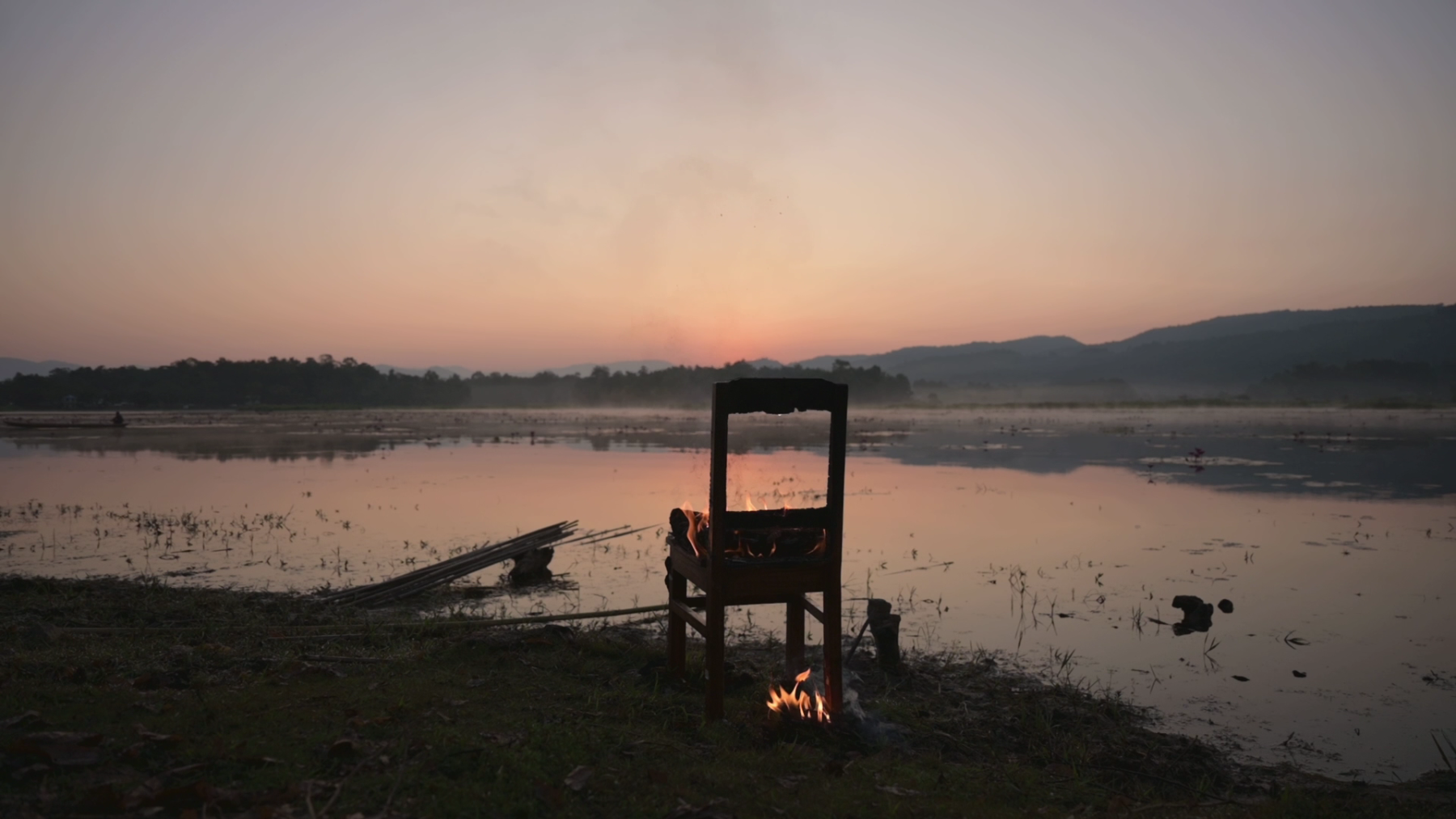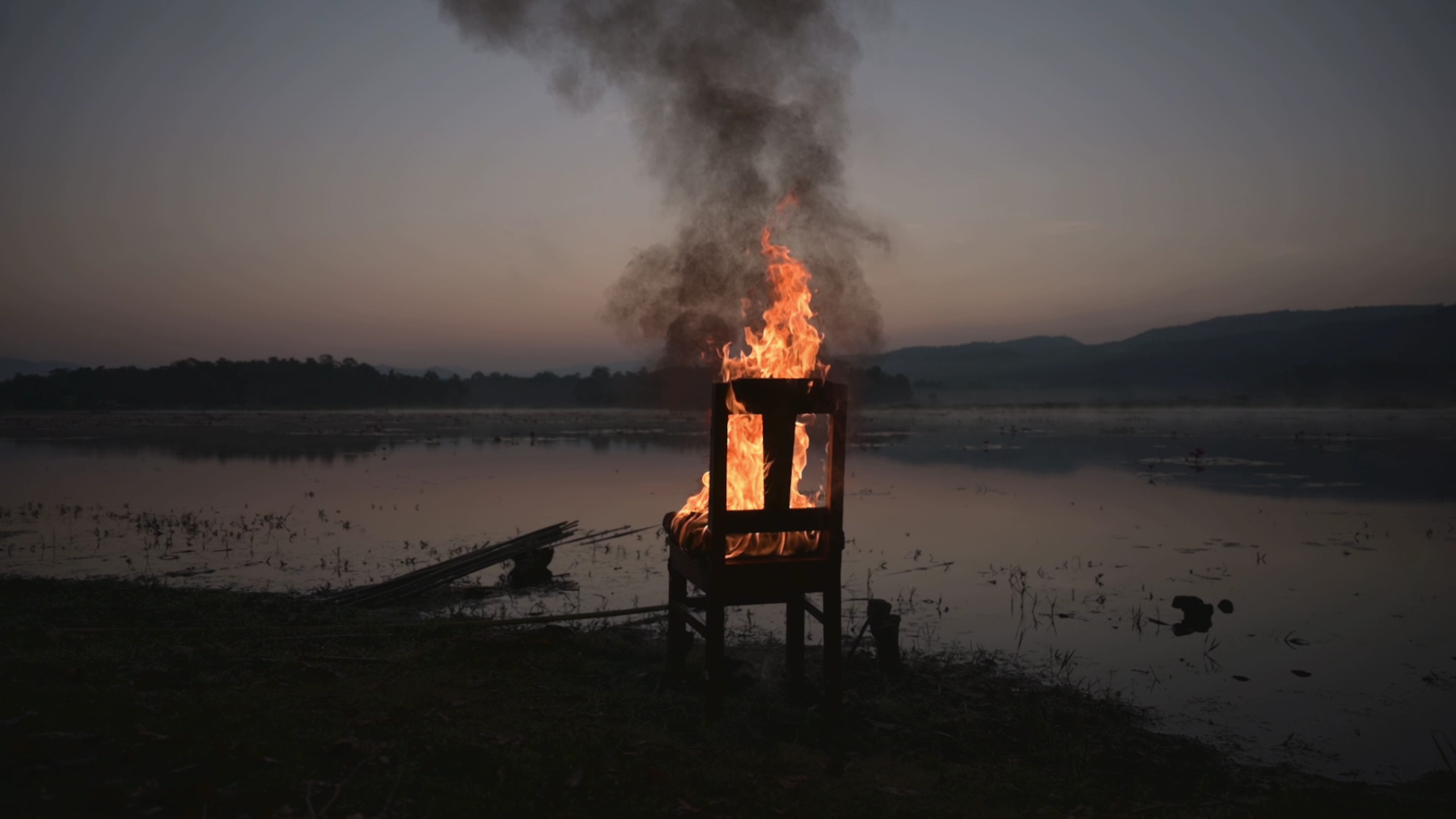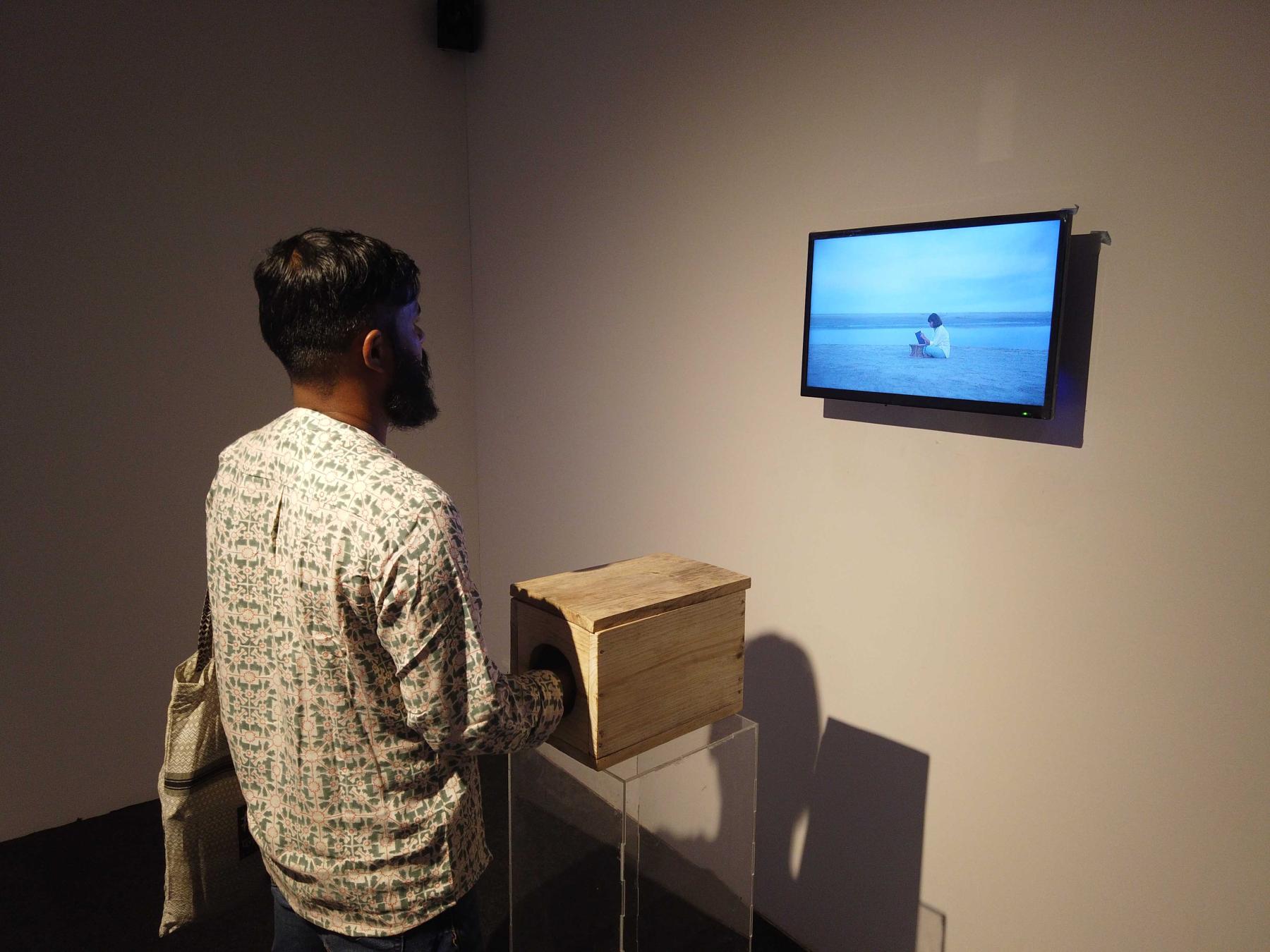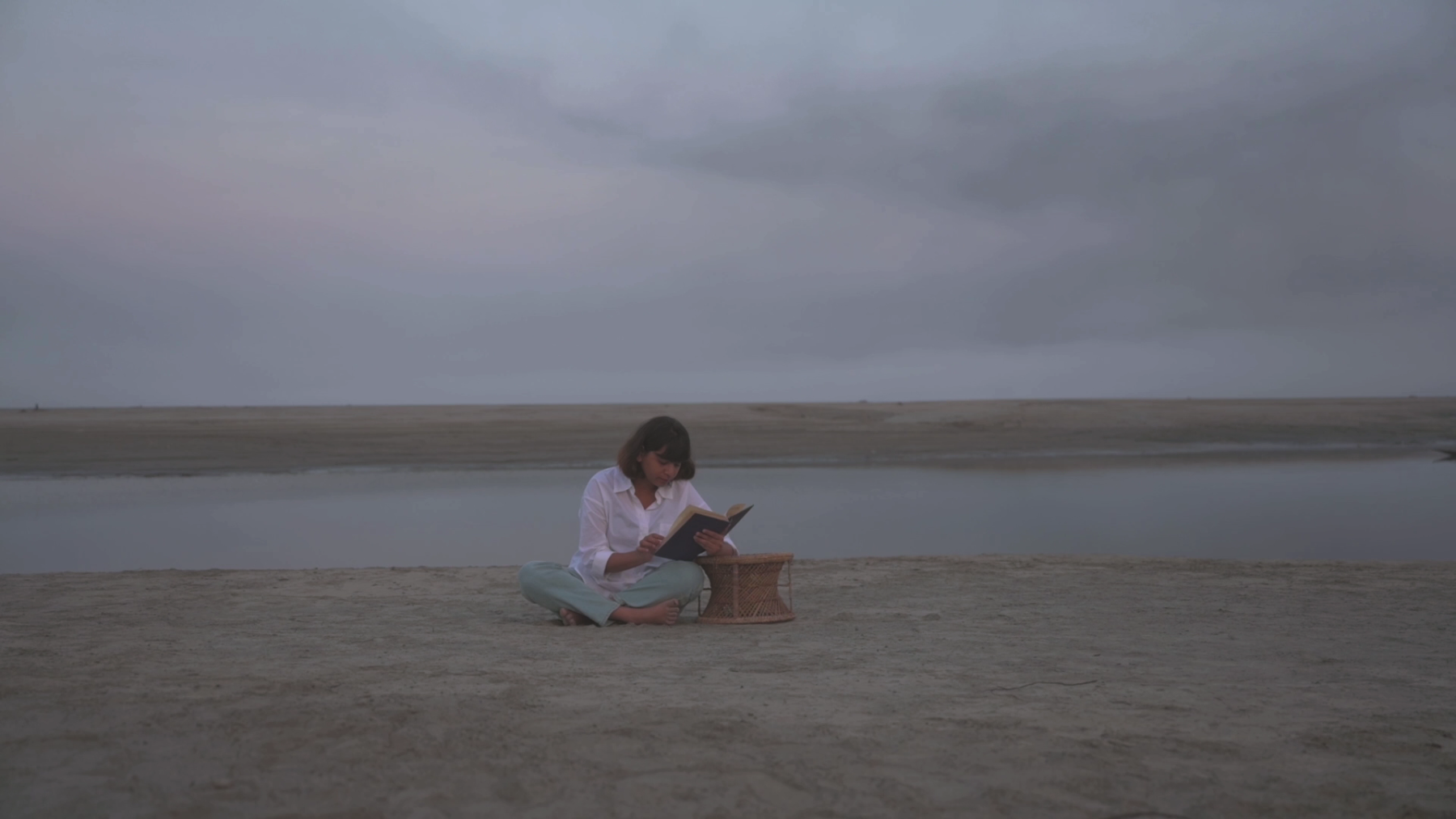Reinterpreting Lexicons: In Conversation with Supriya Dongre
In his text “Caste Life Narratives, Visual Representation, and Protected Ignorance”, Professor Y. S. Alone notes how life experiences produced in relation to the social category of caste are never homogenous experiences. This nature of caste life narratives as heterogeneous is crucial to Supriya Dongre’s research and her larger visual art practice.
As a photography student at the National Institute of Design, Ahmedabad, Dongre has been critically examining the representation of minorities in image-making through her research and practice. In this second part of our conversation, she elaborates on how the audience’s perception of her first installation in Delhi made her rethink and come up with a more tactile space for the installation at the Serendipity Arts Festival 2022. Dongre also discusses how language can be an oppressive tool, as well as the ideas and literature that have helped her address this issue.

Still from Representational Biases. Video Loop. 2 minutes 14 seconds.
PD: The first installation in Delhi was a visual set-up while this iteration in Panjim is a more tactile space. How did the audience interaction in Delhi make you change the direction of the project?
SD: I started exploring Artificial Intelligence (AI) as a tool of perception, where biases are translated into codes. A few programs that I looked at for this work were Midjourney, Dall-e and Stable Diffusion, to understand how AI data sets and neural networks read words like Dalit and Scheduled Caste. As expected, the results threw up dark and undignified images. These images were collected and morphed into a continuous loop—a cycle of perception to projection.
The installation in Delhi had multiple video projections that relied heavily on both scholarly and anecdotal texts. Some were etched on glass surfaces, and placed behind glass cyanotypes of archival images such that the audience could read through the negative and positive spaces of the image.
Once the work was available to the public during the open studio in Delhi, I started observing that while the audience response was a mix of wonder and surprise, I felt that they were taking this in as new information instead of questioning their own notions and biases. I wanted to avoid the didactic way of looking at things to be able to develop the work further.
For the current display at Serendipity, I was adamant that my work be free of the rigid boxes of representation. This installation is a more nuanced form of what I had developed during the three months of residency. To avoid information overload, I worked with interactive elements and a certain kind of playfulness in relation to the narrative, because it became important for me to reconsider the reproduction of the image and reimagine the images of aspiration. This iteration was developed by working closely with designer and educator Sumit Baruah, visual artists Sumit Saikia, Shankar Das, Dibyajyoti Deka and sound artist Surya Sathi Roy.


Stills from Reserved. Video Loop. 6 minutes 5 seconds.
During the residency, I also discovered that semiotics is my strength—it helped me break away from symbolism and bring forth nuanced connotations of the lived realities and present them as abstractions of the same. Since I also acknowledge the impossibility of representing the lived experience, I started working on sensations of touch—the apprehensions as well as the completeness of tactile experiences, through the lens of the politics of untouchability.
This work is made of seven micro stories, each corresponding to a peculiar tactile experience, playing with the correlation of visual storytelling and the textures of material and its forms. The installation aims to foster a space of multiple interpretations and narratives—formed by subjective conditioning—by bridging the gap between my collective memory and the collective memory of the other.

Installation view of 'Questions' at the Serendipity Arts Festival at the Old GMC Building, Panjim, Goa. 2022.

Still from Questions. Video Loop. 3 minutes 50 seconds.
PD: You mentioned the attempt to question the kind of grammar used to represent minorities in your work. Can you shed some light on how this is central to your practice and how you have attempted to subvert this?
SD: What I mean by “grammar” in my work is related to the fact that language is an oppressive tool. In the realm of linguistics, the ones who decide language codes and their meaning hold power over the phenomena of perception among the masses. Roland Barthes’ philosophy has been a major text in all my works. Hence, when I was working on representation, I felt that there was a need to re-examine set definitions of aesthetics or words and introduce polysemy. The lived reality for Dalits is one of revolution, change and denial of power systems. This fight has existed in multiple forms since the Ambedkarite revolution. To highlight this mobility and transformation, I have subverted the narrative/s associated with Dalit identity into a renewed lexicon of representation—one that is subtle and yet has strong signifiers of this identity. I have also worked with the personalisation and depersonalisation of narratives to demonstrate the flux of ideas and states of being, coexisting with a compromised position and history of a community.
During this process, one of my major inspirations has been the text on Protected Ignorance by Prof. Y.S. Alone. I was honoured to meet him during the residency, and the opportunity to interact with his work on relooking established art spaces through Buddhist philosophies and renewed understanding of power structures, helped me reflect on my work. It nurtured my confidence in intuition—the body memory of the community.
To read the first part of this conversation, click here. To read more about works at the Serendipity Arts Festival, click here, here and here.
All images courtesy of the artist and Serendipity Arts Festival.




